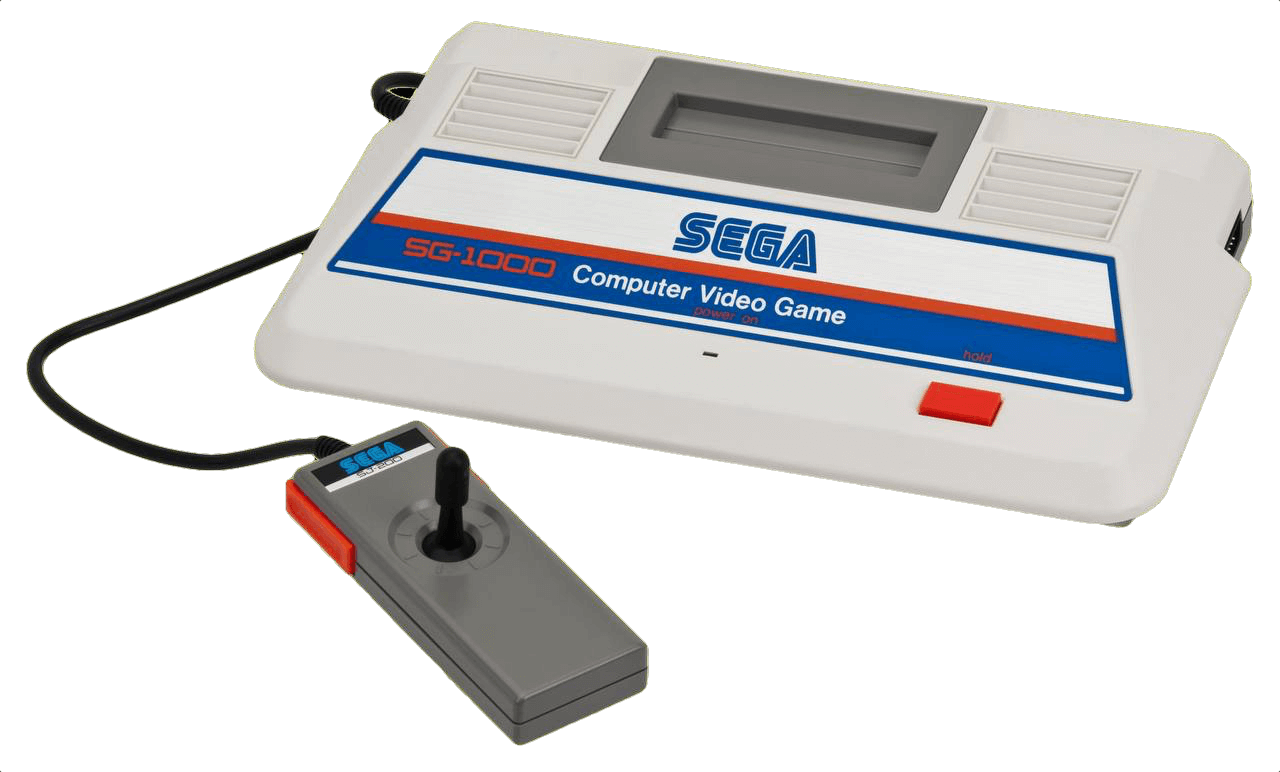
The SG-1000 (Sega Game 1000) was released in Japan on July 15, 1983, the exact same day as Nintendo’s Famicom. As Sega’s first entry into the home console market, the SG-1000 marked the company’s transition from arcade game development into the living room. It featured modest 8-bit hardware—a Zilog Z80 processor, simple tile-based graphics, and support for both cartridges and credit card–style game cards. Though primitive by later standards, the SG-1000 laid the foundation for Sega’s future in home gaming.
Commercially, the SG-1000 struggled to gain traction. It was quickly overshadowed by the technically superior Famicom and lacked widespread third-party support. However, the console was important for internal development at Sega, giving engineers and designers hands-on experience with consumer hardware. Notably, it was the system where Girl’s Garden was developed—a game created by a young Yuji Naka, who would later go on to develop Sonic the Hedgehog. The SG-1000 also spawned hardware variants like the SC-3000 (a computer version) and the SG-1000 II, a more refined and compact iteration.
Although the SG-1000 sold only modestly and saw limited release outside of Japan and a few Asian markets, it played a critical role in Sega’s early console lineage. Its architecture evolved into the Sega Mark III, which was rebranded as the Sega Master System for Western markets. While often overlooked in the broader history of video games, the SG-1000 is where it all began for Sega’s console ambitions, making it a foundational piece of gaming history.
SG-1000 Technical Specifications
| Component | Specification |
|---|---|
| CPU | Zilog Z80 @ 3.58 MHz |
| Graphics | TMS9918A VDP, 16-color display from a palette of 32 |
| Resolution | 256×192 |
| Sound | Texas Instruments SN76489 (3 square wave channels + 1 noise channel) |
| Media | ROM cartridges and Sega My Cards |
| Controllers | Hardwired 2-button digital joystick (removable in SG-1000 II) |
| Release Date | July 15, 1983 (Japan) |